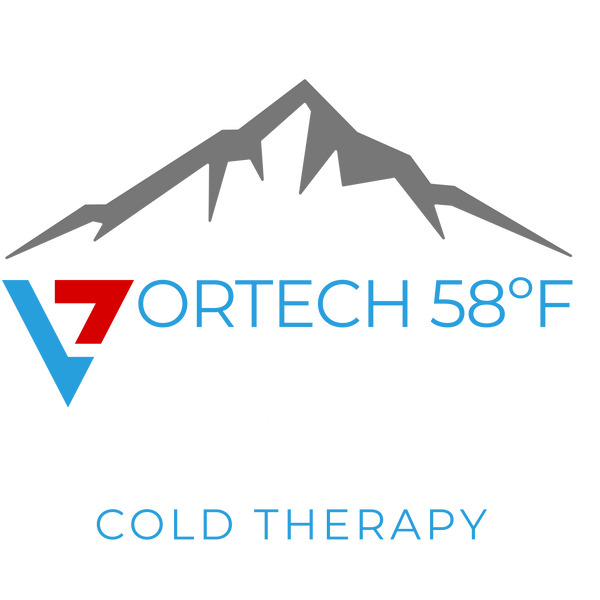Cold Therapy vs Heat Therapy: Which Is Better for Pain & Injury Recovery?
If you’ve ever been injured, sore after a workout, or dealing with joint pain, you’ve probably asked yourself: “Should I use ice or heat?”
Both cold therapy (cryotherapy) and heat therapy (thermotherapy) are powerful recovery tools, but they work in different ways and are best for different situations.
In this guide, we’ll explain:
-
The difference between cold therapy and heat therapy
-
When to use ice vs heat for pain relief and recovery
-
How cold and heat can complement each other
-
Why modern cold therapy wraps are safer and more effective than traditional ice packs
👉 For a deeper dive into recovery, check out our Complete Guide to Cold Therapy & Recovery.
Cold Therapy vs Heat Therapy: The Key Difference
-
Cold therapy reduces blood flow, swelling, and inflammation — making it the best option for new injuries, post-surgery recovery, and flare-ups.
-
Heat therapy increases blood flow, relaxes muscles, and eases stiffness — making it ideal for chronic pain, tension, and pre-workout warm-ups.
Think of it this way:
-
Cold = calm down (reduce swelling and pain)
-
Heat = loosen up (relieve stiffness and tightness)
When to Use Cold Therapy
Best Uses for Cold Therapy (Ice / Cold Wraps)
-
Acute injuries: sprains, strains, bruises, fractures
-
Post-surgery recovery: ACL repair, rotator cuff, knee replacement
-
Joint inflammation: arthritis flare-ups
-
Sports recovery: muscle soreness and swelling after intense training
Benefits of Cold Therapy
-
Reduces swelling and tissue damage
-
Numbs nerve activity → less pain
-
Speeds up early recovery stages
-
Helps manage post-op pain without relying only on medication
👉 Learn more: Cold Therapy After Surgery: A Practical Timeline for Recovery
When to Use Heat Therapy
Best Uses for Heat Therapy (Heating Pads, Warm Baths, Compresses)
-
Chronic pain: back pain, arthritis stiffness, tendonitis
-
Muscle tension: postural tightness or stress-related stiffness
-
Pre-workout warm-up: loosens muscles before stretching or exercise
-
Relaxation: soothes ongoing aches and reduces stress
Benefits of Heat Therapy
-
Increases blood circulation and oxygen delivery
-
Relaxes muscles and improves flexibility
-
Reduces stiffness in joints
-
Provides comfort during long-term pain conditions
Cold vs Heat Therapy by Condition
|
Condition |
Cold Therapy |
Heat Therapy |
|
Sprains & strains |
✅ Best in first 48–72 hours |
❌ Avoid early |
|
Post-surgery swelling |
✅ Reduces inflammation |
❌ Can worsen swelling |
|
Arthritis flare-ups |
✅ Calms inflammation |
⚠️ Use only for stiffness |
|
Chronic back pain |
❌ Limited use |
✅ Loosens tight muscles |
|
Muscle soreness (DOMS) |
✅ Helps reduce pain |
✅ Loosens stiffness |
|
Before workout |
❌ Not recommended |
✅ Improves mobility |
|
After workout |
✅ Reduces swelling |
❌ Can increase inflammation |
Using Cold and Heat Together (Contrast Therapy)
Sometimes, the smartest approach is combining both. This is known as contrast therapy.
-
Cold first: Reduce swelling and pain after an acute injury or workout.
-
Heat later: Relax stiff muscles and restore mobility once inflammation subsides.
Examples:
-
Ankle sprain → Cold in the first 48–72 hours, then heat for stiffness.
-
Arthritis → Cold during flare-ups, heat between flare-ups.
-
Sports recovery → Cold right after training, gentle heat the next day.
Safety Tips
Cold Therapy Safety
-
Limit sessions to 15–20 minutes.
-
Always use a barrier between skin and cold.
-
Avoid if you have poor circulation or nerve damage (unless cleared by a doctor).
Heat Therapy Safety
-
Use warm, not scalding, heat (104–113°F / 40–45°C).
-
Limit sessions to 15–30 minutes.
-
Never use heat on fresh injuries or swelling.
-
Be cautious if you have diabetes or cardiovascular issues.
Tools for Cold Therapy vs Heat Therapy
Cold Therapy Tools
-
Ice packs (basic, but inconsistent)
-
Gel packs (better, but can get too cold)
-
Cold therapy wraps (consistent, ergonomic, safe at 58°F)
Heat Therapy Tools
-
Heating pads (electric or microwavable)
-
Warm compresses
-
Hot water bottles
-
Warm baths / saunas
Why Cold Therapy Wraps Are More Effective Than Ice
Ice packs often get too cold, melt quickly, and don’t stay in place.
Cold therapy wraps like Vortech 58°F are designed for safe, consistent, and comfortable cooling:
-
Stay at 58°F therapeutic range → no risk of freezer burn
-
Fit specific joints → knee, shoulder, ankle, and more
-
Allow mobility → recover while moving, not just sitting still
-
Combine compression + cold for faster swelling reduction
👉 Explore our Vortech 58°F Cold Therapy Wraps to see how they compare to ice.
FAQs — Cold vs Heat Therapy
Q: Is cold or heat therapy better for arthritis?
A: Use cold during flare-ups to reduce swelling; use heat for stiffness between flares.
Q: Should I use heat after surgery?
A: No — use cold therapy first. Heat can make swelling worse.
Q: Can I use both cold and heat in the same day?
A: Yes — cold first to calm inflammation, then heat later to restore flexibility.
Q: Which therapy is better for athletes?
A: Cold therapy is best after training to control inflammation. Heat can be used before workouts to loosen tight muscles.
Conclusion: Choosing Cold vs Heat the Smart Way
Cold therapy and heat therapy are not competitors — they’re complements.
-
Use cold for inflammation, swelling, and post-surgery recovery.
-
Use heat for stiffness, chronic pain, and muscle relaxation.
By knowing when to use each, you’ll recover smarter, faster, and with less pain.
For safe, consistent cooling that actually fits into your life, try Vortech 58°F Cold Therapy Wraps — designed for effective recovery without the mess of ice.
